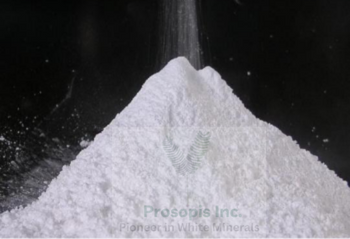Talc
Talc is a clay mineral, composed of hydrated magnesium silicate with the chemical formula Mg3Si4O10(OH)2 Talc deposits form from the transformation of high magnesium rocks by siliceous hydrothermal fluids. Most talc originates from the alteration of dolomite, or ultramafic intrusive rocks. Following this process, talc is always found in combination with other mineral(s).
Each Talc Deposit Has A Unique Morphology And Mineralogy, But All Talcs Exhibit The Following Unique Properties:
- chemical inertness affinity for organic substances. Softest mineral on earth (1 on Mohs’s scale)
- Platy, lamellar
- Hydrophobic
- Oleophilic (natural affinity with oils)
- Relatively inert.
These properties make talc a highly prized multi-functional filler and process enabler in an array of applications from plastics to paper, ceramics to paint.
Hitech works with talc from all around the world with main mineral deposits along India, spread across different regions from Dausa to Halwani to Udaipur and all along to the south. We also source our lumps from Afghanistan and Egypt to meet to the absolute epitome in the quality of talc we produce.
Our Talc Based Solutions:
INDUSTRY
MATERIAL CODE
APPLICATION
Plant And Agriculture:
Our talc when used as Carriers form a critical application in fertilisers and plant protection. Adding talc to active ingredients results in a well-managed release.
Our talc is an excellent natural alternatives to chemicals for protecting fruit from the sun’s rays and disease, Maintaining effective flow and anti-caking agents for fertilizers.
Machinery And Industrial:
Our anti-cacking properties, talc properties, improves the fluidity of the material, helping in keeping equipment clean (minimizing bacteria proliferation), lowers energy consumption, reduces production stoppages, and makes the operator’s job safer.
owing to its strengthening capabilities. Talc is used in domestic appliances, automotive components such as bumpers and dashboards.
Our Talc’s smoothness is appreciated in products that require suppleness for a smooth and regular effect, must be robust, but at the same time softer than the paper.
Talc’s adsorption properties are also valuable in the treatment of waste water by the activated sludge method. Providing an adequate support surface, talc platelets actually “ballast” the bacteria used in such treatments, thereby improving sedimentation and avoiding the release of bacteria in the final clean effluent.
Paint:
Our Talc, when used as a thickener influences the viscosity of water- and solvent- based formulations. Talc increases covering power, improves flow and prevents settling, improving the adhesion and final mechanical properties of the coating. Talc enables paints, with the necessary low viscosities, to be formulated with significantly less organic solvents controlling sedimentation rates during storage.
Our talc is also the principal ingredient in putties, improving adhesion and standability.
In paints and coatings, our talc forms an ideal, natural solution for replacing less environment-friendly TiO2 and for improving the mechanical and optical properties of coatings.
Pharmaceuticals:
Talc is used as a lubricant in pharmaceuticals . Talc also facilitates the ingestion of solid drugs. Talc also helps mould and demould pills.
The chemical inertness of talc is of obvious interest for carrier applications. Talc also has the advantage of not generating bacterial growth and of releasing fragrances progressively.
Food:
Certain foodstuffs or conveyor belts are also powdered with talc, to excellent effect, Owing to its anti-sticking agent. It finds a wide application in chewing gums and chocolates, also used as strengthening agent in food packing.
Detergents:
Talc because of its inert, soft and oleophilic nature, it is used as a filler in detergents and soaps.
Animal Nutrition:
Talc is extensively used in animal feed. It wraps each feed particle, setting up a natural barrier that stops moisture escaping from or entering the treated feed.
Rubber:
Talc powdering of moulds is widely used for example in tyre manufacturing Talc is also used as a semi – reinforcing filler in rubber.
Foundry:
Talc powdering of moulds is widely used for example foundry applications because if its slippery nature. It reduces firing time and temperature.
Paper:
Talc’s adsorption properties, are key in a number of applications, particularly pitch control in paper making where talc is used to absorb organic impurities which are sticky.
Talc also greatly improves printing runnability.
As a filler in paper, it increases smoothness and machinability, reduces friction, abrasion and porosity.
In paper coating, it helps to improve ink transfer, finish feel and legibility of printing
In the pulp and paper industry, our talcs are excellent solutions for avoiding deposits enabling mills to work in closed water circuits and to optimize prime resources
Ceramics:
Talc’s properties bring benefits to ceramics (household, construction, refractory and technical).
It reduces firing time and temperature, improves vitrification and consequently the resistance of the ceramic. Talc also improves thermal shock resistance, particularly important in catalytic exhausts.
Used in ceramic tiles and sanitary ware, our talc improves the vitrification process, allowing producers to reduce firing temperatures and shorten firing cycles.
